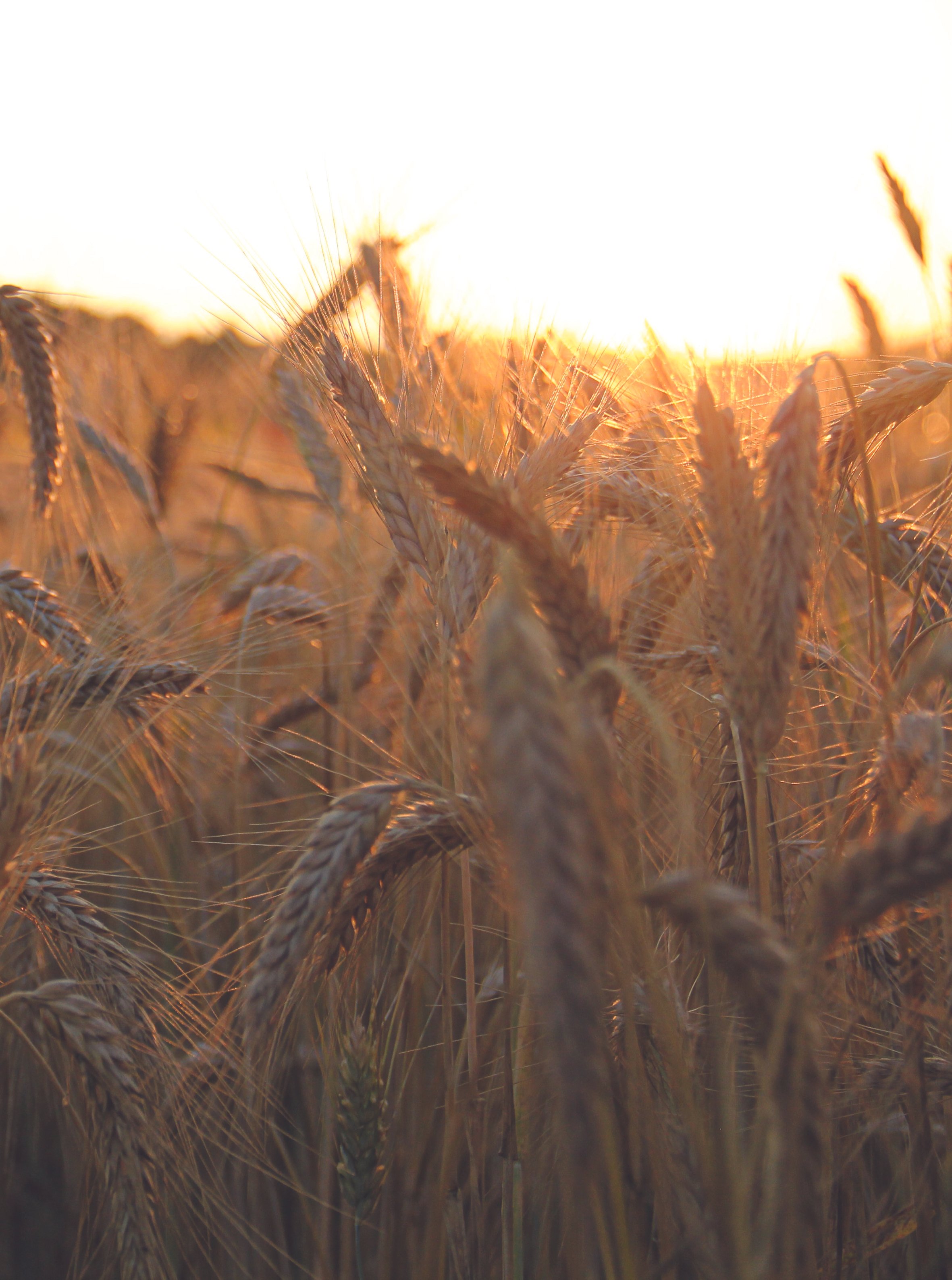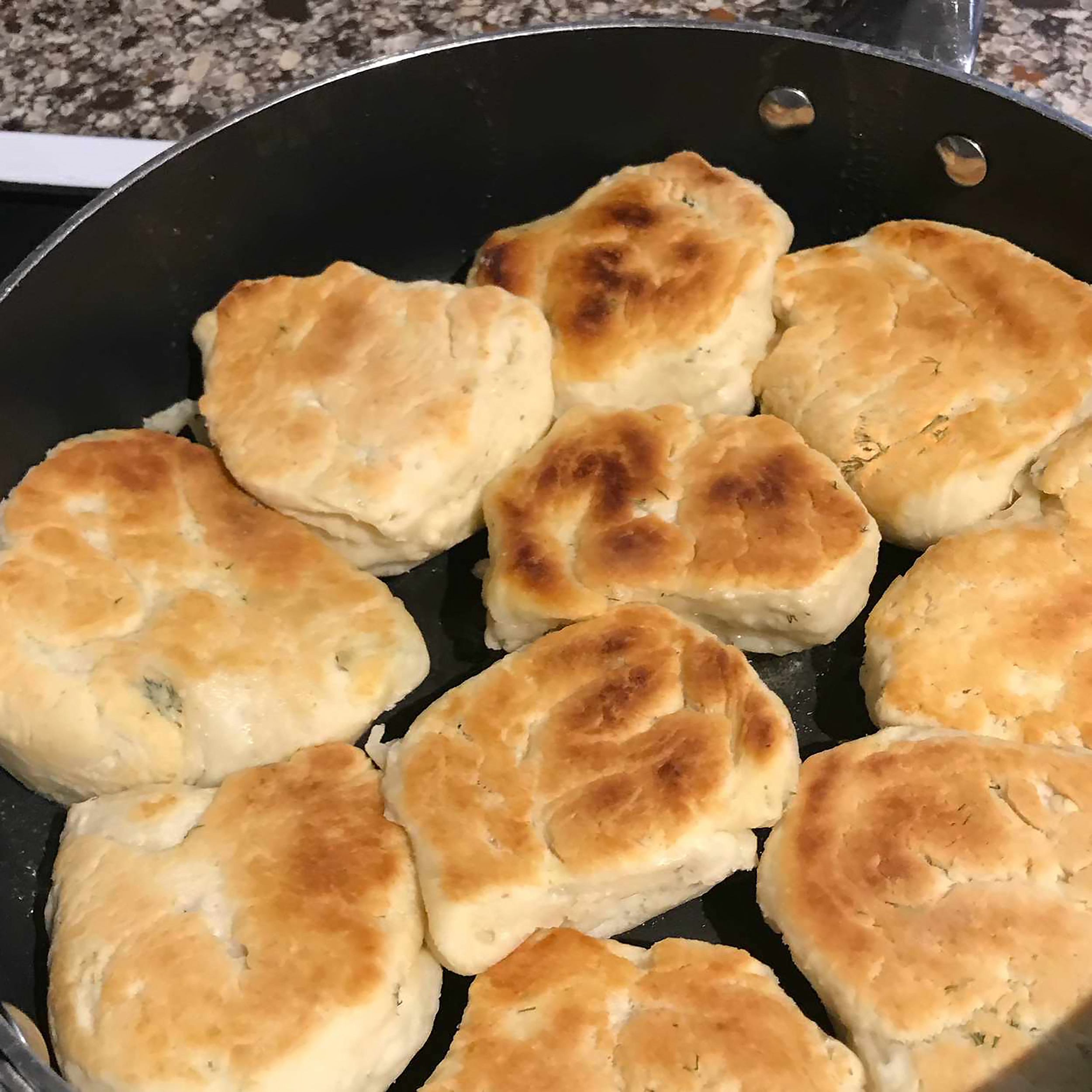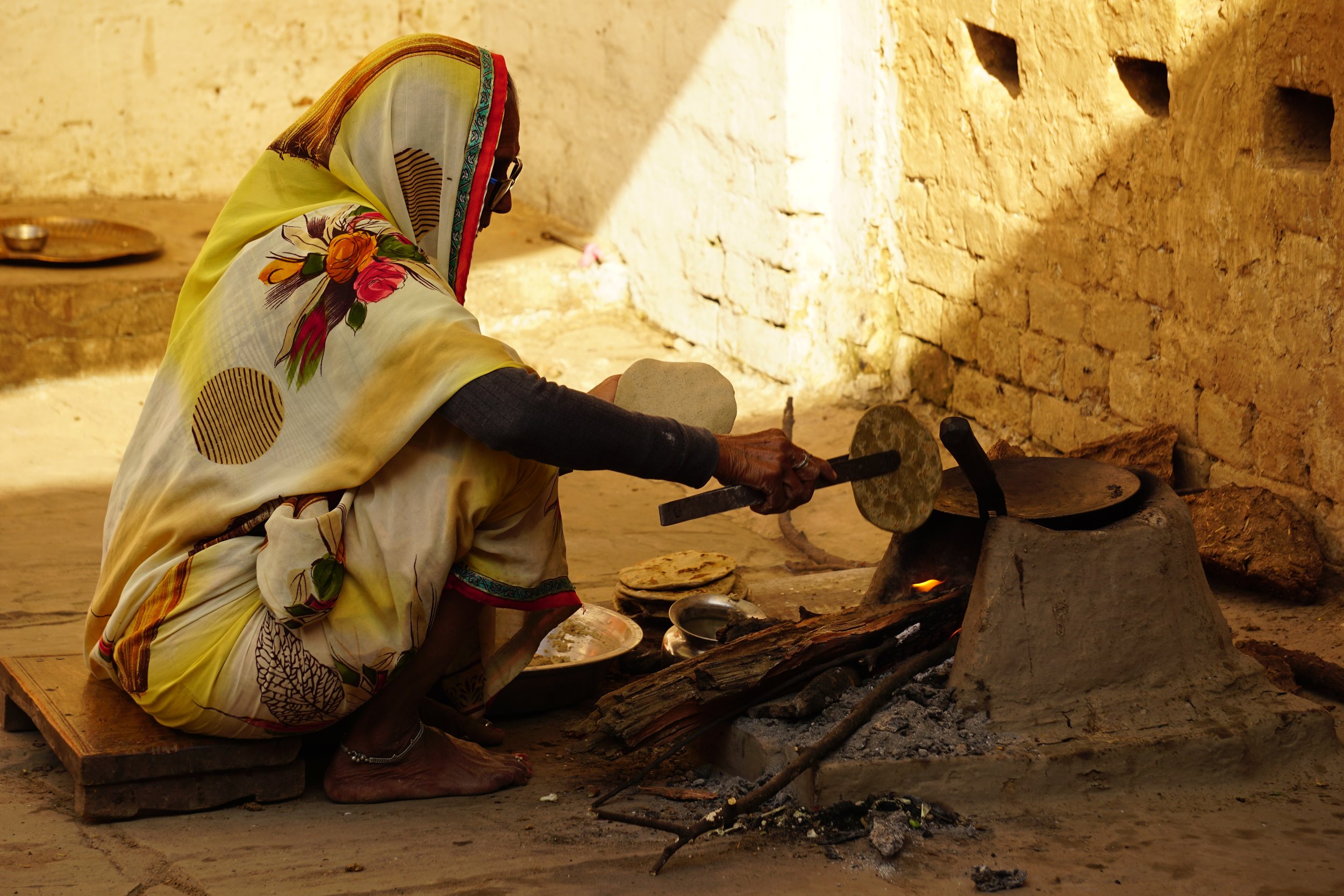
Breaking Bread
Making Bread
BANNOCK BY KRISTINA JOE
“Born and raised in the unceded territory of the Kwikwetlem First nation, our cultural identity was almost wiped out during the colonization of the Canadian Indigenous people. The settlers introduced Indigenous people to flour and sugar. Once Scottish settlers introduced Bannock bread it soon spread to Indigenous people all across north America – making it their national bread also known as fry bread.
My father, who learned from his mother, created his own recipes. They are our family’s secret and as a young adult, I learned the hard way why his bread is called 10 knead the dough. referring to the chemical leavening agent, baking powder helps raise bread but unlike yeast cannot be kneaded a lot as it will toughen the dough. My mother, to my father’s shock, broke her front tooth because the dough became so hard. After that day she has not been much of a fan, unlike us children. My father’s recipe is well-loved by indigenous communities & is our family secret.
As a child, I learned how to make Bannock not by being told but by having to watch and learn myself. I have been hired to produce hundreds of pieces at a time for events and have enjoyed witnessing my Bannock be fought over, people taking extra in their purses for later, and have had many compliments of my efforts. My husband complains that I don’t make Bannock often enough for the family but when I get hired to make some I give him the ugly pieces. Some of my unique creations are Bannock pizza, Bannock hotdogs on a stick, Chocolate filled Bannock, Ham & Cheese and Taco style Bannock.”
Harvest Healing Moon, art by and courtesy of Kristina Joe.

Basic Bannock Recipe
Recipe courtesy of Kristina Joe
Ingredients
4 to 6 cups of white flour
2 to 3 tablespoons of baking powder
Pinch of salt
1 to 2 cups of cold water
Oil for frying
-
Mix ingredients. Add water while slowly stirring. In case there is too much water add flour.
Do not knead the dough.
Once in a ball shape, flour the table surface and place in the middle flour, use your palm to flatten.
Make about a half-inch thick. Use a round cookie cutter or cup to make 10 even sized pieces.
Have a frying pan ready with an inch of vegetable oil at medium heat.
Throw a small piece of dough in, if it starts to fry the oil is hot enough.
Place 4 to 6 pieces of Bannock dough in a pan.
Wait until golden brown, use a fork to flip each piece, and fry for about 1 minute per side.
Have a platter ready with a layer of paper towel to absorb extra oil. Let cool.
MUPOTOHAI BY TRISH MANDEWO
Photo courtesy of Trish Mandewo.
“‘Mupotohai’ is a corn bread that was a staple when I was growing up in Zimbabwe. This bread had different names depending on the region of the country one was from. In the Southern region of Chivhu where my grandparents lived, it was called ‘chimondimwi’. The bread gained this name as it was considered dense and heavy, and one would be satisfied after eating one slice. In the city, it was coined ‘Mupotohai’, referencing the fact that it was made in a pot. Other regional names were ‘Chimodho’ and ‘Chimubhakiwa’.
My Grandmother knew how much I loved this bread so she would make it every time I visited. The chlorophyl from the mukukutu leaves would diffuse into the bread, giving it a unique and refreshing taste, one that is nostalgic for me. Cooking on hot embers was a slow process but the waiting was compensated for by the amazing story telling by my grandparents.
This cornmeal bread was very common in Zimbabwe until the ’80s and ’90s. The recipe was simple, easy to make, fresh, had no preservatives and the bread was delicious. Urban dwellers like my parents adopted this recipe by preparing it on stove top or in a potjie (cauldron) over a fire. Sadly, when western plain buttered bread with margarine was introduced, ‘mupotohai’ was permanently lost.
Due to the modern mechanization of bread production, this traditional bread is no longer a staple and sadly is unknown to the majority of Zimbabweans especially those born after the 80s.”

Mupotohai Recipe
Recipe courtesy of Trish Mandewo
Ingredients
1¼ cup mealie-meal (cornmeal)
1½ cup all-purpose flour
1 cup buttermilk
½ cup sugar (add more sugar or honey for sweeter bread)
½ cup vegetable oil
½ teaspoon salt
1 – 2 eggs
1 teaspoon baking powder
½ teaspoon baking soda
-
Add the oil and the egg to 3/4 of the buttermilk, whisk and set aside.
Take a bowl and sift cornmeal, all-purpose flour, baking powder, baking soda and salt
Add sugar and stir. Make a well, take set aside buttermilk, egg and oil mixture and pour it into bowl with dry ingredients.
Mix well until combined.
Add additional buttermilk to bring to the right consistency. You don’t want butter to be runny.
Clean mukukutu leaves or corn husks with water and pat dry. Add Batter on one leaf and cover with another.
Pour your mupotohayi batter onto the leaves or husks and place on hot ambers. Turn over after about 10-15 minutes depending on the thickness of the dough.
Roti
Photo courtesy of Ashwini Chaudhary via Unsplash.
Roti ( ,روڻیਰੋਟੀ) is a round, flatted out bread, popular in the Indian subcontinent. The dough of roti is usually made by combining and kneading wheat flour ( , ٓاڻاਆਟਾ) and water together. In rural Punjab, the wheat flour is often replaced with pearl millet (, باجرهਬਾਜਰਾ) or maize ( ,مکئیਮਕਈ) flour. The dough is then divided into smaller, oval shaped balls which are flattened out in round forms using a rolling pin(,ويلنا / بيلناਵੇਲ਼ਨਾ/ਬੇਲਣਾ)and palm blows. These flattened, round pieces of dough are then placed on a preheated pan (,توا ਤਵਾ) and occasionally flipped until they are cooked on both sides. Sometimes, this flattened dough is also cooked in earthen clay ovens ( ,تندورਤੰ ਦੂਰ). Roti is usually eaten with different curries (/سالن ,لاونਸਾਲਨ/ ਲਾਵਣ). Other flatbreads related to roti are Paraṭha, Kulchā/Nān and Purī which differ from roti because of the types of flour, method of cooking and extra ingredients like oil used in making them.
Roti is so common in Punjab that it has become an overarching term to refer to food itself. For example, a customary way to invite any guests for food is by asking them about “roti, pāni” (Pāni means water/ drink). Similarly, the different food arrangements at events of marriage and funeral are also broadly alluded to by the word “roti.” Roti is also used to indicate one’s lifestyle. A very simple, minimalist lifestyle in Punjabi, Urdu and Hindi is indicated by the phrase “rukẖī ,روکهی سوکهی کهانا( ”sukẖī kẖānā ਰੁਖੀ ਸੁਖੀ ਖਾਣਾ), referring to eating a parched, dry roti. In contrast, a luxurious. lavish lifestyle is indicated by the term “čapṛi/čopṛi kẖānā” , ਚਪੜੀ/ ਚੋਪੜੀچپڑی/چوپڑی کهانا ( ਖਾਣਾ) referring to eating buttered, greased, oiled roti.

Photo courtesy of Shruti Singh via Unsplash.
In Guru Granth Sahib, the famous Punjabi Poet Baba Farid wrote:
ਫਰੀਦਾ ਰੋਟੀ ਮੇਰੀ ਕਾਠ ਕੀ ਲਾਵਣੁ ਮੇਰੀ ਭੁਖ
Faridā roti meri kaṭh ki lāwaṇ meri bhukh
O Farid, my roti is of wood and my curry is hunger
ਜਿਨਾ ਖਾਧੀ ਚੋਪੜੀ ਘਣੇ ਸਹਨਿਗੇ ਦੁਖ
Jina khadi čopṛi ghaṇe sahengē dukh
Those who ate buttered (roti) will suffer a lot of pain
ਰੁਖੀ ਸੁਖੀ ਖਾਇ ਕੈ ਠੰਢਾ ਪਾਣੀ ਪੀਉ
Rūkhi sūkhi khaē kē ṭhanḍa pāṇi piō
Eat dry (roti) and drink cold water
ਫਰੀਦਾ ਦੇਖਿ ਪਰਾਈ ਚੋਪੜੀ ਨਾ ਤਰਸਾਏ ਜੀਉ
Fareeda dēkh parāi čopṛi nā tarsāe Jio
O Farid, don’t be tempted by looking at other’s buttered (roti)
These verses advise the reader to stay happy and content with a simplistic life and avoid the temptation of chasing after a luxurious lifestyle.
Making Bread
Yeast
Bread is usually divided into two categories: leavened and unleavened. Unleavened bread is made without the using of rising agents, while leavened bread is commonly associated with bread: light, fluffy loaves with round shapes. Leavening happens when yeast or baking powder/soda are added to the dough before baking. These leaveners work to create buoyant pockets of air bubbles in the dough, giving leavened bread its taste, texture, and structure.
Yeast, which is a single-celled living fungus, slowly feeds on the sugars in flour during its fermentation process, creating carbon dioxide. It interacts with wheat flour to create gluten, the protein that makes bread stretchy when kneaded, and dies during, trapping air pockets and giving bread its shape.
The amount of yeast greatly affects the character of bread. Yeast-heavy bread rapidly produces carbon dioxide, alcohol, and other organic compounds, creating lighter, fluffier bread. Bakers can put less yeast into their dough to slow the leavening process and create a stronger dough that is more likely to retain its shape during the baking process.
Photo courtesy of Jeremy Yap via Unsplash.

Photo courtesy of Wikicommons.
Flour
In most bread, flour is the most basic ingredient. Made by grinding nuts, seeds, grains or roots, flour’s core ingredients can be found almost anywhere. Different types of flour reflect the regionality and the types of bread that originate in different regions. Many traditional North American breads (think tortillas) are made from corn, which is native to the Americas, while breads from Southern and Western Europe are typically made from wheat flour, as wheat is more readily grown in places like France and turkey. Similarly, darker northern European bread is made from rye flour, as rye is well adapted to cold climates.
Wheat is used for white and sourdough bread. it has an incredibly high yield per acre, grows well in temperate climates and produces a high-quality, versatile crop. this means that wheat can grow almost anywhere with moderate temperatures, average rainfall, and an abundance of arable land. the variety of wheat-producing locations reflects this flexibility. Wheat is grown as a cash crop everywhere from northern India and Turkey to Southern Australia and France, providing these countries with an affordable, local crop that is ready to be made into a shelf-stable food.
Baking
Once the bread is leavened and holds its shape, it is put into the oven. During baking, bread undergoes the Maillard reaction. Named after the French chemist who discovered the process in the early 20th century, it is the chemical reaction between amino acids, which make up proteins, and reducing sugars.
The reaction fuses sugars and fats together, producing the browning on bread and giving it its flavour. Depending on the temperature, the chemical makeup of the food, and how much air is present, the Maillard reaction produces hundreds of different flavours. This results in bread’s golden-brown crust and its slightly sweet flavour.
Yeast, which is a single-celled living fungus, slowly feeds on the sugars in flour during its fermentation process, creating carbon dioxide. It interacts with wheat flour to create gluten, the protein that makes bread stretchy when kneaded, and dies during, trapping air pockets and giving bread its shape.
The amount of yeast greatly affects the character of bread. Yeast-heavy bread rapidly produces carbon dioxide, alcohol, and other organic compounds, creating lighter, fluffier bread. Bakers can put less yeast into their dough to slow the leavening process and create a stronger dough that is more likely to retain its shape during the baking process.
Photo courtesy of Wendell Shin via Unsplash.





